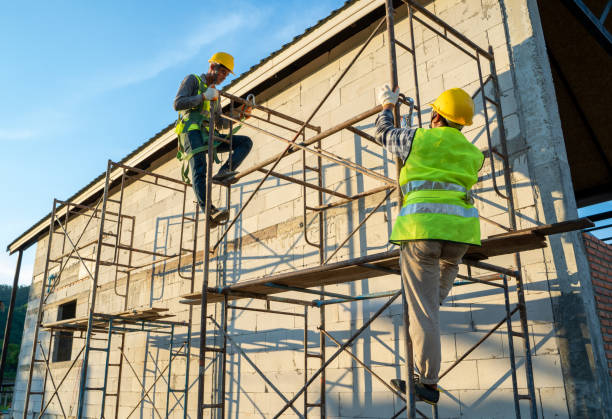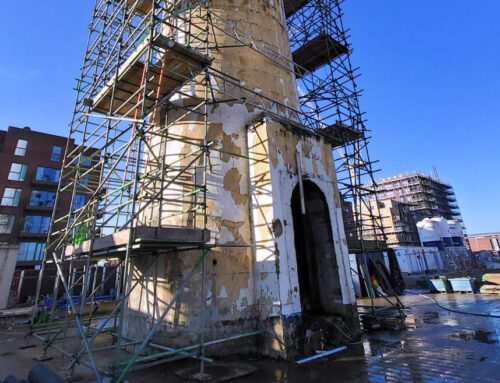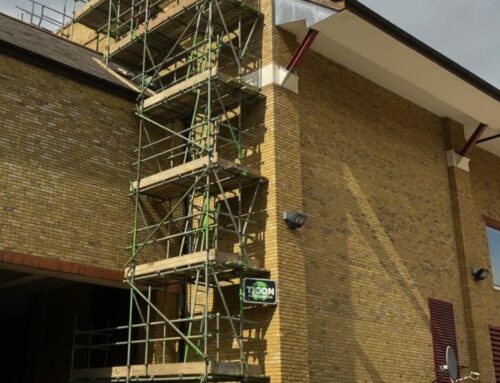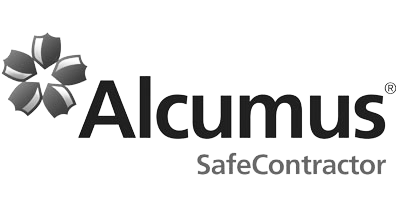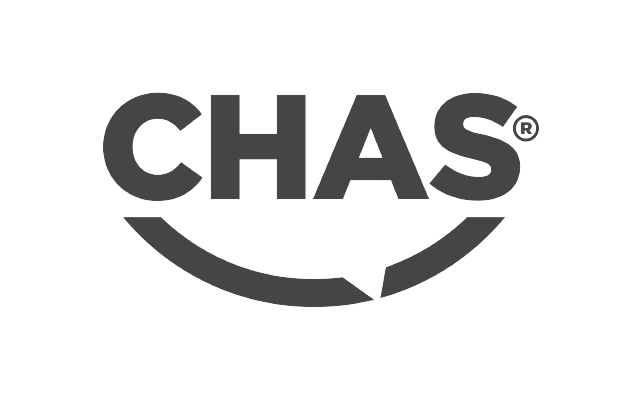Hazard Identification for Scaffolding Assembly: Ensuring Safety on the Job
In the dynamic realm of the construction industry, where precision and progress are measured down to the last inch, safety unfailingly takes center stage. Scaffolding, an indispensable tool facilitating access to elevated work areas, stands as both a harbinger of productivity and a potential source of risk. Amidst the bustling worksites and towering structures, prioritizing the well-being of workers and ensuring the provision of a secure work platform becomes a non-negotiable commitment.
Welcome to our comprehensive guide on Hazard Identification for Scaffolding Assembly. In the following sections, we will take you on an enlightening journey through the crucial domain of scaffolding safety. Our objective is crystal clear: to emphasize the paramount importance of hazard identification, unveil the common risks that may lurk during scaffolding assembly, and explore the world of best practices that elevate safety protocols to an exceptional standard.
Whether you are a seasoned professional, well-versed in the intricacies of construction, or someone stepping into the industry for the first time, this guide is crafted with one goal in mind — to empower you. Empower you with the knowledge, insights, and expertise required to navigate the challenges of scaffolding assembly confidently, competently, and, above all, safely. Our shared commitment to safety is the cornerstone upon which we build a future where construction sites are not just hubs of progress but sanctuaries of security, where every worker returns home unscathed, and where the foundations of safety are as robust as the structures they support. Welcome to the transformative world of scaffolding safety – where awareness, vigilance, and preparedness pave the way for a brighter, safer future in construction.
Compliance with Regulations
In the United Kingdom, the Work at Height Regulations 2005 impose rigorous legal responsibilities on employers and workers within the construction industry, with a primary and unwavering focus on ensuring scaffolding safety. The pivotal role of hazard identification stands resolute at the forefront of not just complying with these regulations but embracing them wholeheartedly.
These regulations go beyond the mere checkboxes of compliance; they embody a profound commitment to the sanctity of safety. Hazard identification assumes the role of a proactive sentinel, tirelessly scanning the scaffolding landscape to pinpoint risks before they ever dare to become dangerous threats. By doing so, employers and workers alike conscientiously fulfill their duties and obligations as outlined by these regulations, leaving no room for compromise when it comes to the well-being of all those involved in construction endeavors.
In essence, hazard identification is not just an extrinsic requirement dictated by the regulatory framework; it signifies a collective determination within the construction industry to not only meet but surpass legal obligations. It represents a conscientious decision to elevate scaffolding safety standards to unprecedented heights. It’s not merely a matter of legality; it’s a profound ethical responsibility to safeguard the very lives that breathe life into the construction world.
Enhancing Worker Confidence: A Productivity Booster
In the construction industry, worker confidence is akin to a well-oiled machine – when it runs smoothly, productivity soars. A key factor in nurturing this confidence is hazard identification. When workers perceive that their safety is a top priority, it instills a profound sense of assurance. Hazard identification plays a pivotal role in cultivating this confidence by demonstrating that potential risks have been meticulously assessed and effectively mitigated. It’s not merely about compliance; it’s about fostering a culture of safety that empowers workers to perform at their best.
In such an environment, workers can channel their focus entirely into their tasks, unburdened by concerns. Their minds are free from worry, allowing them to execute their responsibilities with precision and efficiency. As a result, projects progress more smoothly, deadlines are met, and overall productivity soars. It’s a win-win situation where safety and productivity go hand in hand, and it all begins with the vigilant practice of hazard identification.
Common Hazards in Scaffolding Assembly
To effectively and comprehensively manage hazards encountered during scaffolding assembly, it is of paramount importance to be acutely aware of the most prevalent and consequential risks intertwined with this intricate process. By understanding and acknowledging these critical hazards, workers and professionals can proactively take measures to mitigate potential dangers and ensure a secure work environment for all involved. Below, we delve into the significant hazards that demand vigilant attention:
1. Unstable Foundations:
It’s imperative to ensure that scaffolding is erected on a stable and level surface. Any deviation from this requirement can lead to the risk of scaffold collapse, putting workers in a perilous situation. A solid foundation is the bedrock of scaffold safety, and overlooking it can have severe consequences.
2. Overloading:
Exceeding the scaffold’s maximum load capacity is a recipe for disaster. When a scaffold is overloaded, it can cause structural components to weaken or fail altogether. It’s not just about following weight limits; it’s about understanding that overloading jeopardizes the integrity of the entire scaffold structure, making it a critical concern that must be rigorously managed.
3. Inadequate Bracing and Ties:
Properly bracing and tying scaffolds are non-negotiable aspects of safety, particularly when dealing with tall or freestanding scaffolds. In windy conditions, the significance of adequate bracing becomes even more pronounced. Without the right bracing and ties, scaffolds can sway or tip, leading to accidents and injuries.
4. Unsafe Access:
Access points should never be an afterthought in scaffold assembly. Inadequate access solutions or resorting to makeshift methods can result in slips, trips, or falls during the critical phase of scaffold assembly. Safe access is not just a convenience but a fundamental safety measure.
5. Falling Objects:
The risk of tools, materials, or debris falling from the scaffold is a significant concern. It’s not just the safety of workers on the scaffold but also those below that is at stake. Implementing measures to secure tools and materials is essential in mitigating this hazard.
6. Insufficient Fall Protection:
Fall protection is a cornerstone of scaffold safety. Failing to provide adequate fall protection, whether through guardrails or personal fall arrest systems, can result in severe injuries or even fatalities in the event of a fall. Safety harnesses, guardrails, and other protective measures should be in place to minimize this risk and protect workers at all times.
Best Practices for Hazard Identification and Mitigation
Safety is a top priority in construction, especially when it comes to scaffolding assembly. To ensure the well-being of workers, it’s crucial to identify and mitigate potential hazards. Let’s explore some best practices for hazard identification and mitigation in scaffolding assembly.
1. Conduct a Thorough Risk Assessment:
Prior to commencing scaffold assembly, it is essential to conduct a comprehensive risk assessment. This process involves identifying potential hazards, assessing associated risks, and formulating robust control measures to mitigate these risks effectively. A meticulous risk assessment lays the foundation for a safer scaffold assembly process.
2. Use Competent Personnel:
The key to safe scaffold assembly lies in having competent and well-trained personnel on-site. It is imperative that individuals involved in the assembly process possess the necessary skills and knowledge to understand potential hazards and, more importantly, how to mitigate them. Competent personnel are the linchpin of scaffold safety.
3. Regular Inspection:
Vigilant oversight during assembly is paramount. Regular inspections should be carried out to scrutinize scaffold components, connections, and overall stability. The objective is to promptly detect and address any issues or vulnerabilities that may compromise safety, ensuring that the scaffold remains secure throughout the assembly process.
4. Proper Tools and Equipment:
Equipping workers with the correct tools and equipment is fundamental to ensuring the safe assembly of scaffolds. This includes providing them with appropriate access equipment and fall protection gear. When workers have access to the right tools, it enhances the overall safety and efficiency of the assembly.
5. Clear Communication:
Effective communication is the lifeblood of a safe scaffold assembly operation. Maintaining open and clear lines of communication within the team is crucial. Encouraging workers to promptly report any identified hazards or express concerns fosters a proactive safety culture, where potential issues can be addressed swiftly.
6. Continuous Training:
Safety is an evolving landscape, and it demands ongoing training and awareness. Investing in continuous training programs for your workforce is essential to keep them well-informed about the latest safety procedures and potential hazards. A well-trained team is a safer team, equipped to navigate the complexities of scaffold assembly with confidence and competence.
Conclusion
By prioritizing hazard identification and following best practices, scaffolding assembly can be executed safely and efficiently, ensuring the well-being of workers and the success of construction projects. In summary, Hazard Identification for Scaffolding Assembly transcends mere regulatory compliance; it is the linchpin for safeguarding workers and preserving construction project timelines. Through meticulous risk assessment, the engagement of highly competent personnel, consistent inspections, and an unwavering dedication to safety, scaffolding assembly remains not only secure but highly efficient. Safety should be embraced as a collective responsibility, with each construction team member actively contributing to hazard identification and mitigation. It is through this collective effort that we can forge a working environment where every day in hazard identification for scaffolding assembly is marked not just by progress, but by secure and prosperous progress.


